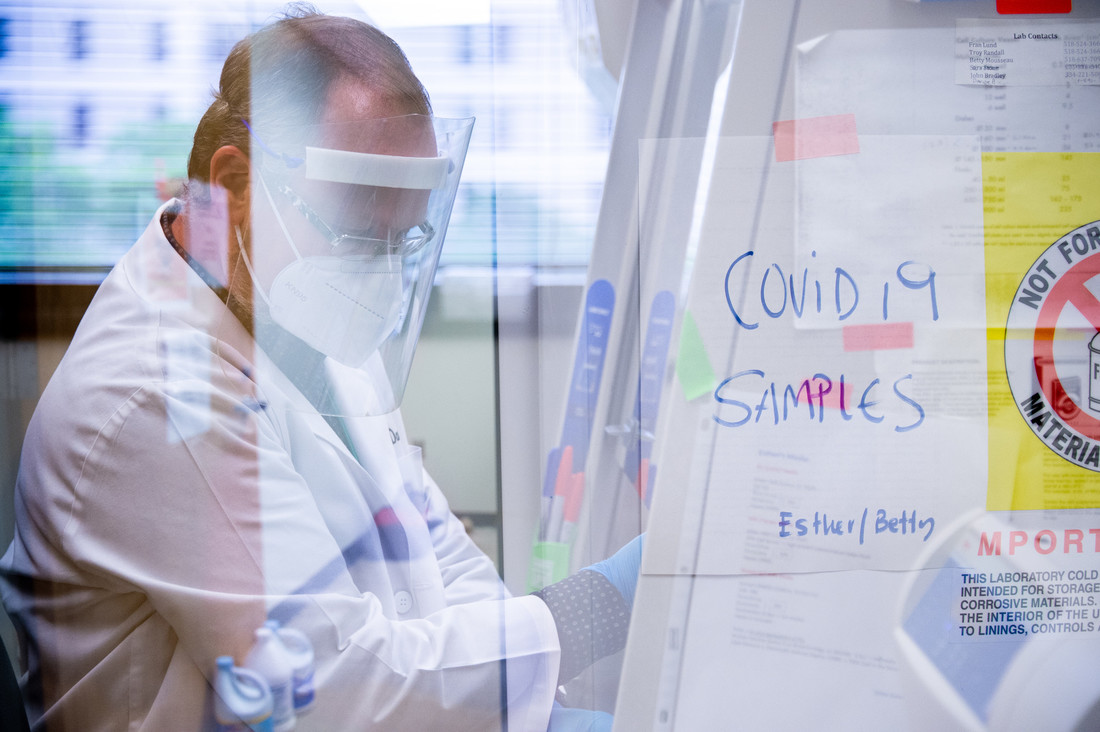 Research misconduct is a common concern among the scientific community that can have potentially serious consequences. To mitigate this concern, the Heersink School of Medicine, in partnership with the central Office of Responsible Research Practices, established a new program last year known as the Committee on Responsible Research Practices (CRRP). It aims to strengthen culture, ethos, and morale around research best practices. It is comprised of volunteers from the faculty recommended by their chair and works closely with UAB’s Assistant Vice President and Research Integrity Officer Matthew Ronning and is directed by Heersink School of Medicine Research Integrity Liaison Peter Prevelige.
Research misconduct is a common concern among the scientific community that can have potentially serious consequences. To mitigate this concern, the Heersink School of Medicine, in partnership with the central Office of Responsible Research Practices, established a new program last year known as the Committee on Responsible Research Practices (CRRP). It aims to strengthen culture, ethos, and morale around research best practices. It is comprised of volunteers from the faculty recommended by their chair and works closely with UAB’s Assistant Vice President and Research Integrity Officer Matthew Ronning and is directed by Heersink School of Medicine Research Integrity Liaison Peter Prevelige.
The CRRP members serve on inquiry and investigation committees for research misconduct cases. This experience, along with invited speakers on topics relevant to responsible research practices, establishes a group of highly-regarded researchers throughout Heersink.
Research integrity is overseen for Heersink by Victor Darley-Usmar, Ph.D., senior associate dean for Research Compliance and Administration. Together with UAB’s Office of Responsible Research Practices they aim to advocate for best practices across the school. Their goal is to promote a culture of responsible research practices to ensure integrity, objectivity, and admirable practices worthy of UAB’s stakeholders.
This is a rapidly changing landscape. Below, Darley-Usmar, Ronning, and Prevelige remind investigators, both clinical and basic, of some of actions they can take to avoid making errors that can lead to research misconduct allegations. All of these listed below have occurred over the last year with UAB investigators.
Protecting patient data in presentations and publications
When data from patient studies is developed for publication or presentations, it is common practice to exemplify by using individual subjects. To de-identify the data patient information, cover with a mask over a figure or slide. If the mask is not embedded as a picture, it can easily become more transparent than intended in a figure or slide, accidentally revealing the patient’s identity. “The impact of such a violation is potentially very serious,” Darley-Usmar said. “It is important that we remain diligent in reviewing papers and presentations before submission to avoid these errors.”
Do not use the same image twice for different conditions
Preparing composite figures to show key data from several different sources is a common practice in preparing grant submissions. In doing this, it is very easy to lose track of the original data since one blot can look very much like another. It can mistakenly cause using an image more than once for different experiments or mislabeling. This can be identified by screening software and can be the basis of a research misconduct allegation.
Avoid “cleaning-up” blots and microscopy
Splicing relevant lanes of gel electrophoresis is necessary in manuscripts, presentations, and grant applications. However, it is crucial to clearly mark directly on a Western/Southern/PCR gel image where lanes have been removed and spliced.
Additionally, the background and foreground of such data must not be enhanced without clearly noting such manipulation in the legend since this can change the perception and interpretation of the data.
“The Federal Office of Research Integrity (ORI) has funded continued development of artificial intelligence software designed to screen for image anomalies including inappropriate duplications in grant applications,” Darley-Usmar said. “The ORI also manually screens for ‘aesthetic’ modifications to primary images using advanced Photoshop applications that accentuate image characteristics for easy detection of manipulations.”
Before submitting any image in a publication or grant application, it is crucial for principal investigators to double check the provenance of all images, figures, and tables to ensure that only original data is used.
Use plagiarism detection software
Plagiarism in grant submissions has occurred recently and in another institution this has resulted in findings of research misconduct and disciplinary actions including loss of research funding, retraction of manuscripts, and removal from leadership roles.
Darley-Usmar strongly advises that all principal investigators use iThenticate to identify (often inadvertent) plagiarism before the submission of any manuscript or grant application “UAB’s Office of Responsible Research Practices makes this software available to faculty at no additional cost to faculty and it is very easy to use,” he explained.
Following these simple, but crucial tips will grow public trust and admiration in the school, UAB, and academic research in general.
Find more Heersink School of Medicine faculty resources here.